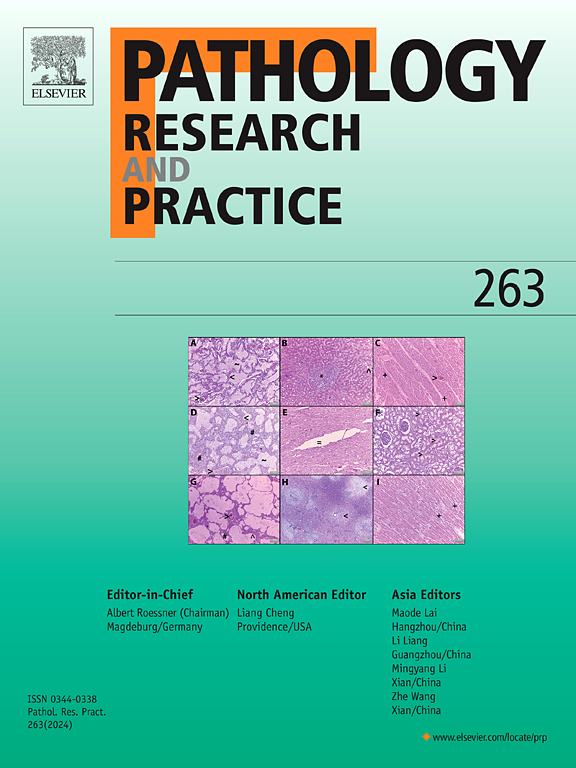Exploring immune checkpoint inhibitors: Focus on PD-1/PD-L1 axis and beyond
IF 2.9
4区 医学
Q2 PATHOLOGY
引用次数: 0
Abstract
Immunotherapy emerges as a promising approach, marked by recent substantial progress in elucidating how the host immune response impacts tumor development and its sensitivity to various treatments. Immune checkpoint inhibitors have revolutionized cancer therapy by unleashing the power of the immune system to recognize and eradicate tumor cells. Among these, inhibitors targeting the programmed cell death protein 1 (PD-1) and its ligand (PD-L1) have garnered significant attention due to their remarkable clinical efficacy across various malignancies. This review delves into the mechanisms of action, clinical applications, and emerging therapeutic strategies surrounding PD-1/PD-L1 blockade. We explore the intricate interactions between PD-1/PD-L1 and other immune checkpoints, shedding light on combinatorial approaches to enhance treatment outcomes and overcome resistance mechanisms. Furthermore, we discuss the expanding landscape of immune checkpoint inhibitors beyond PD-1/PD-L1, including novel targets such as CTLA-4, LAG-3, TIM-3, and TIGIT. Through a comprehensive analysis of preclinical and clinical studies, we highlight the promise and challenges of immune checkpoint blockade in cancer immunotherapy, paving the way for future advancements in the field.
最近,在阐明宿主免疫反应如何影响肿瘤发生及其对各种治疗的敏感性方面取得了重大进展,免疫疗法成为一种前景广阔的方法。免疫检查点抑制剂通过释放免疫系统识别和消灭肿瘤细胞的能力,彻底改变了癌症疗法。其中,以程序性细胞死亡蛋白1(PD-1)及其配体(PD-L1)为靶点的抑制剂因其在各种恶性肿瘤中显著的临床疗效而备受关注。本综述深入探讨了 PD-1/PD-L1 阻断剂的作用机制、临床应用和新兴治疗策略。我们探讨了 PD-1/PD-L1 与其他免疫检查点之间错综复杂的相互作用,揭示了提高治疗效果和克服耐药机制的组合方法。此外,我们还讨论了 PD-1/PD-L1 之外不断扩展的免疫检查点抑制剂,包括 CTLA-4、LAG-3、TIM-3 和 TIGIT 等新靶点。通过对临床前和临床研究的全面分析,我们强调了免疫检查点阻断在癌症免疫疗法中的前景和挑战,为该领域未来的发展铺平了道路。
本文章由计算机程序翻译,如有差异,请以英文原文为准。
求助全文
约1分钟内获得全文
求助全文
来源期刊
CiteScore
5.00
自引率
3.60%
发文量
405
审稿时长
24 days
期刊介绍:
Pathology, Research and Practice provides accessible coverage of the most recent developments across the entire field of pathology: Reviews focus on recent progress in pathology, while Comments look at interesting current problems and at hypotheses for future developments in pathology. Original Papers present novel findings on all aspects of general, anatomic and molecular pathology. Rapid Communications inform readers on preliminary findings that may be relevant for further studies and need to be communicated quickly. Teaching Cases look at new aspects or special diagnostic problems of diseases and at case reports relevant for the pathologist''s practice.

 求助内容:
求助内容: 应助结果提醒方式:
应助结果提醒方式:


